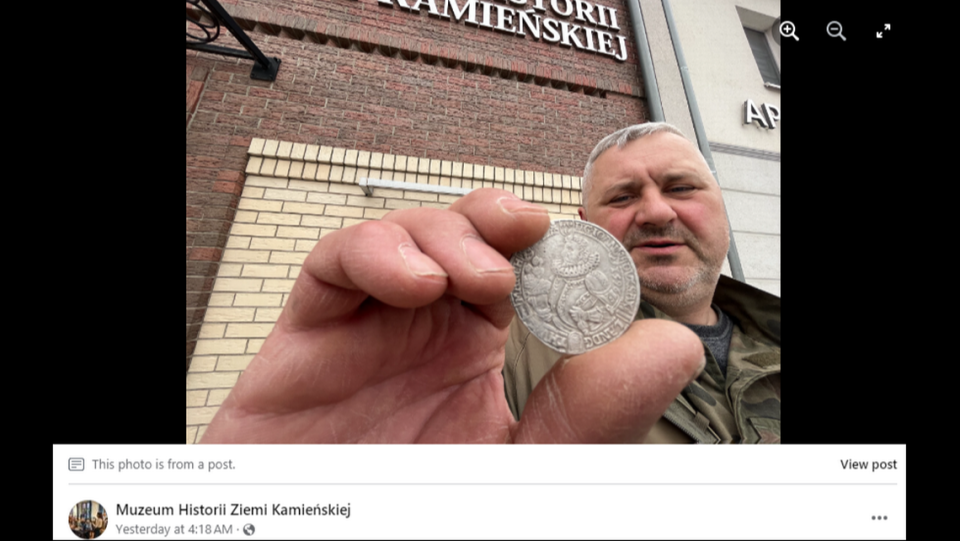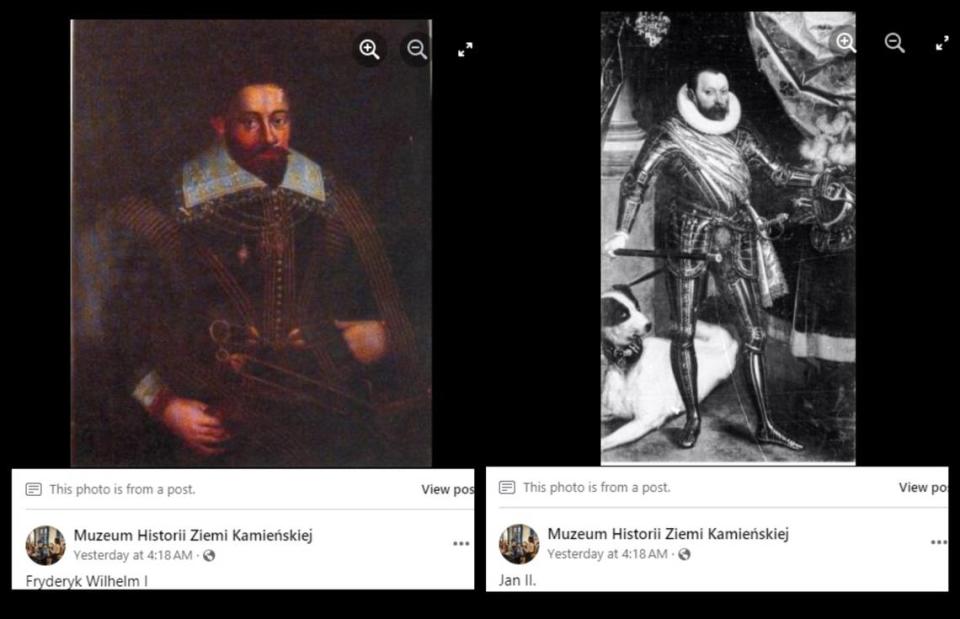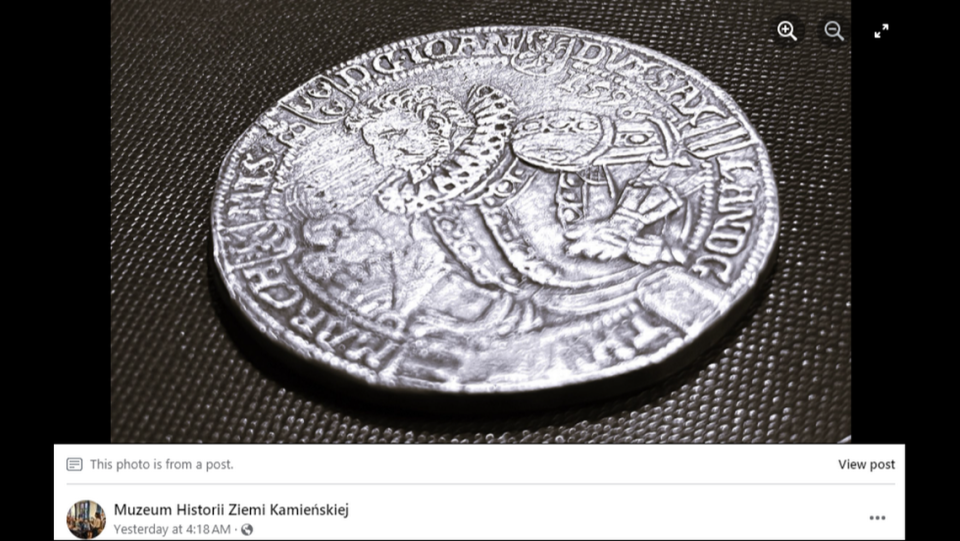Farmer loses plow part in Polish field — then finds historic artifact during search
A Polish farmer was working a field with a plow when a part broke off and was lost in the dirt.
Knowing a local archaeological group had helped in various local initiatives, the farmer called the association for help to search for the missing piece.
Instead, they made an extremely rare discovery.
As the team scoured the field, one of the searchers saw something glistening in the dirt, according to an April 9 news release from the Muzeum Historii Ziemi Kamieńskiej, or the Kamień Land History Museum.
The searcher, known for his extraordinary luck according to the association, saw that it wasn’t the part they were hoping to find, but something much older.
In his hand was a large silver coin, and the team knew right away that it was something special, the museum said.

Uncover more archaeological finds
What are we learning about the past? Here are three of our most eye-catching archaeology stories from the past week.
→ Roman helmet looked like a 'rusty bucket' when it was found in UK. Now, it's restored
→Elaborate 600-year-old castle — complete with moat — unearthed in France. Take a look
→ Mysterious wooden train car — almost 100 years old — unearthed in Belgium, photos show
Weighing nearly 30 grams with a diameter of 4 centimeters, the coin had the depictions of two princes on each side, the museum said.
The search team brought the coin to the museum for analysis, where it was determined to be a Renaissance thaler, a type of coin minted in silver from the German states in the 15th to 19th centuries.
The museum said the coin is extremely rare, only seen occasionally in auctions online.
The princes were co-rulers of the Duchy of Saxony, a region in the northern region of modern-day Germany, upon their father’s death, the museum said, and the coin was minted to honor their rule.

One side depicts Prince Friedrich Wilhelm I, and the other depicts Prince John II, both wearing parade armor with swords and the collar, typical for those in high social status in the late Renaissance, the museum said.
The museum team said the coin was crafted with an extreme attention to detail, and despite seeing archaeological finds often, they found this discovery to be an incredible joy.

But, some mystery still remains.
The coin is hundreds of miles from where it likely was created, so the team wonders how it got to the field in the first place.
One explanation is a traveler stopped at a nearby pond for some water for their horses and it was dropped, the museum said, but they will likely never know about the coin’s journey to Poland.
The coin was donated to the museum by the search team, according to the release.
The discovery was made in Duniewo, near the northern coast of Poland on the Baltic Sea.
The news release from the Muzeum Historii Ziemi Kamieńskiej was translated by Facebook.
Mystery object found on Cape Cod beach linked to once top-secret program, park says
Beautiful glasswork discovered at ancient Roman crossroads in France. See the finds
‘Bloodthirsty’ predator found buried with ancient dogs in Hungary, baffling experts
Search for home of medieval hermit saint leads to even more ancient find in UK. See it

